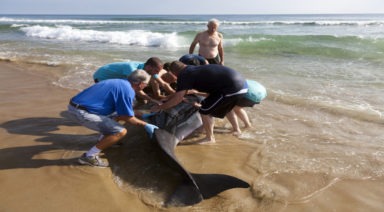New Tool May Help Solve the Teen Mental Health Crisis

As rates of mental health issues in teens reach epidemic proportions, a new intervention that reframes the way they view stressors shows great promise in improving both psychological and physiological health.
Given the exponentially growing mental health crisis among teens, the American Academy of Pediatrics, along with several other medical organizations, recently declared a national emergency in children’s mental health.
While many societal factors are being implicated, researchers at the University of Rochester recently conducted a study that focused on the ordinary, day-to-day stresses that teens face, such as how they’re perceived by others.
Psychologist Jeremy Jamieson, who headed up the study, told the University of Rochester News Center, “For adolescents, social hierarchy, social comparisons, and peer evaluations have always been important, but now it’s there all the time… people are receiving a daily stream of likes, dislikes, and comments via social media, which makes for a constant state of social evaluation. it’s one of the most damaging things we’ve seen for adolescents.”
While these “social-evaluative stressors” can lead directly to depression and anxiety, it is how teens deal with them, experts say, that determines the psychological outcome.
While conventional thinking equates stress with something “bad,” Jamieson says, “stress is a normal and even defining feature of adolescence… for those of us who study processes and psychophysiology, stress is just any demand for change — it’s neither good nor bad.”
And when teens avoid stress, experts say, they lose out on the opportunity to grow from the unavoidable situations that cause it.
The intervention developed by Jamieson and his colleagues was informed by the idea that how we respond to stress can either lead to mental health issues or to resilience.
Consisting of a 30-minute online training module, the intervention takes a “stress optimization” approach defined in the study as, “Learning to engage positively with rigorous but useful social and academic stressors, rather than seeking indiscriminately to minimize or avoid stress.”
The self-administered online training works by helping teens develop what researchers call “synergistic mindsets.” The first is a growth mindset, which is the idea that one’s intelligence can be developed in response to a challenge.
The other is what the researchers call a “stress-can-be-enhancing mindset.” This is the idea that one’s physiological stress responses, such as sweaty palms and racing heart, are not only not harmful, but can actually enhance one’s performance in challenging situations.
Researchers administered the intervention to a large group of adolescents and found that it dramatically improved biological responses, psychological well-being, and academic performance. Given how simple the intervention is, researchers see huge potential in large-scale implementation and are planning further trials.
The key takeaway, says Jamieson, is that this approach is, “Teaching people about how stress can be useful. That’s a really big, novel idea for a lot of people. Stress is typically not seen as something that is beneficial and adaptive, it’s seen as something that’s damaging. We’re really trying to work against that misconception.”
New Study Could Show Why Kids Are Creative Geniuses

Most young children show signs of creative genius, but over time those numbers drop significantly.
A new study on how young children learn could help parents teach their children and help answer the question of nature versus nurture. In 1968, a study conducted by George Land and Beth Jarman found that 98% of children were considered creative geniuses by NASA standards.
But as this group grew older, that number dropped off rapidly; at age 10, it fell to 30 percent, by age 15 it dropped to 12 percent, and by adulthood, it was just two percent. Today, researchers at Birkbeck University in London are using brainwave scanning caps to look inside the brains of kids while they complete various tasks.
Artie Wu, an expert on parenting, relationships, and finding your bliss, weighs in on the subject.
“Children come out, they see the world as it is —they don’t know — there’s no filter between brain and mouth,” Wu said. “But this is the genius view, they see the world as it is, not as it should be. The aperture has not tightened down, they just see everything as it is, and they say it. We typically need to do some bit of trimming, training, and educating for them to be able to get along in life. (But) the way we do the enforcement is through shaming.”




































